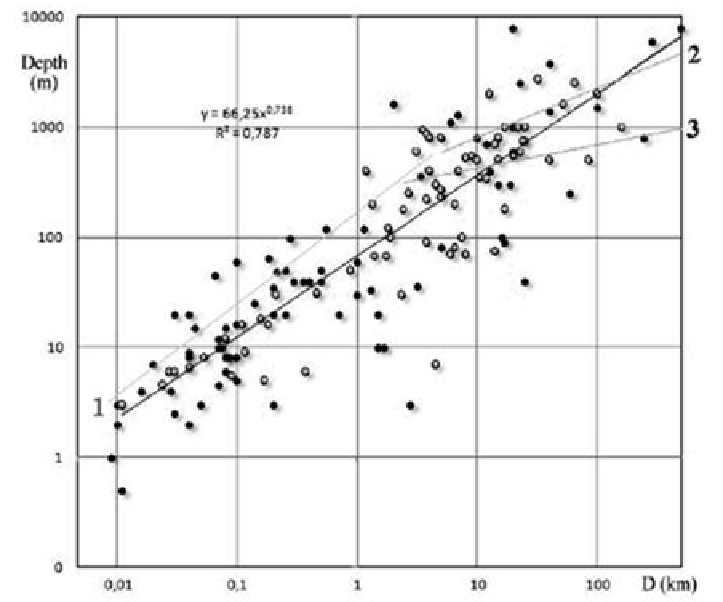Geography Reference
In-Depth Information
Figure 27. Geometry of impact craters. Lines 1-3 correspond to known depth-diameter
relationships of craters for different target rocks [59]: 1)
Dep
~159·
D
0.829
for
D
<3.8 km
in crystalline rocks and
D
<1.2 km in sediments; 2)
Dep
~52·
D
0.189
for
D
>4 km in
crystalline rocks; 3)
Dep
~204·
D
0.27
for
D
>2.5 km in sediments. Dark color shows
proven structures.
Information Technologies and Methods Used to Study the Shape
of Craters
We study the geometry of craters using the shaded relief model and digital
mapping. Typical morphological elements of impact structures have been
systematized and can be used as diagnostic features [7, 62].
The basic hypothesis of the impact-explosive tectonics [63] is that
meteorite craters on the Earth should be as frequent as on the Moon or on the
Mars. To see how many large (D>>100 km) ring structures (RS) are there on
the Earth, one can examine respective geological maps based on satellite
imagery [64, 65] (Figure 28a). The use of processing algorithms for digital

